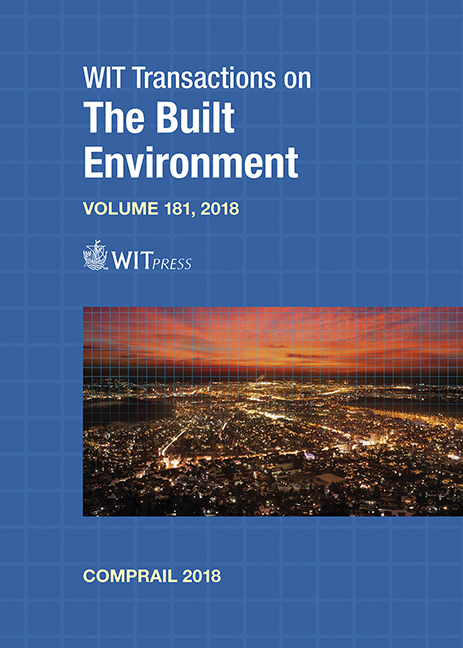TRAIN RESCHEDULING GENERATION CONSIDERING ROLLING STOCK TYPES AND CLOSED-OFF AREAS
Price
Free (open access)
Transaction
Volume
181
Pages
11
Page Range
423 - 433
Published
2018
Size
705 kb
Paper DOI
10.2495/CR180381
Copyright
WIT Press
Author(s)
TERUOMI KATORI, TAKASHI IZUMI
Abstract
During railway operations, trains cannot operate on a scheduled timetable when a traffic accident happens. In such a case, exact re-operation time must be predicted and a rescheduling timetable after re-operation has to be generated quickly. Rescheduling timetables have been generated by manual operators. However, recently high-performance computers have also generated rescheduling timetables automatically. When a traffic accident happens, there are two main rescheduling plans considering traffic features on the tracks and infrastructure (for example, possible locations for a turning operation). In one plan, all tracks are closed and all trains re-started at the same time. In the second plan, the closed-off area is limited to only one part, and in other areas trains can run turning back operations. This rescheduling applies to where many trains run turning operations, and this type of rescheduling has the merit of continued traffic. Against this background, we are studying the automatic generation of rescheduling timetables. In Japanese urban areas, JR and some private company trains (rolling stocks) run through each other for passenger convenience, but the rolling stocks have limited running areas. For example, an area is operated by directory current rolling stock, but another area is powered by alternative current or diesel rolling stock operation. In this paper, we propose an improved rescheduling generation method that includes the closed-off area while also considering the rolling stock types. The generated rescheduling timetable includes turning operations in certain areas. With this method, a pausing time is set for each rolling stock, and other trains’ paths may not cross the accident location. Of course, if the same pausing time is set for all trains, a rescheduling plan will be generated. Generated rescheduling plans are evaluated for passenger convenience; average headway time at each station for other directions and standard deviation time are evaluated. Shorter average headway time leads to larger transportation numbers, and smaller standard deviation means a more even passenger distribution for all trains. This method is applied to two scheduled timetables on a modelled double track line. Some rescheduling results are compared with different parameters. Generated rescheduled timetables include turning back operation.
Keywords
train operation, rescheduling plan, closed-off area, turning back operation, rolling stock types, average headway time





